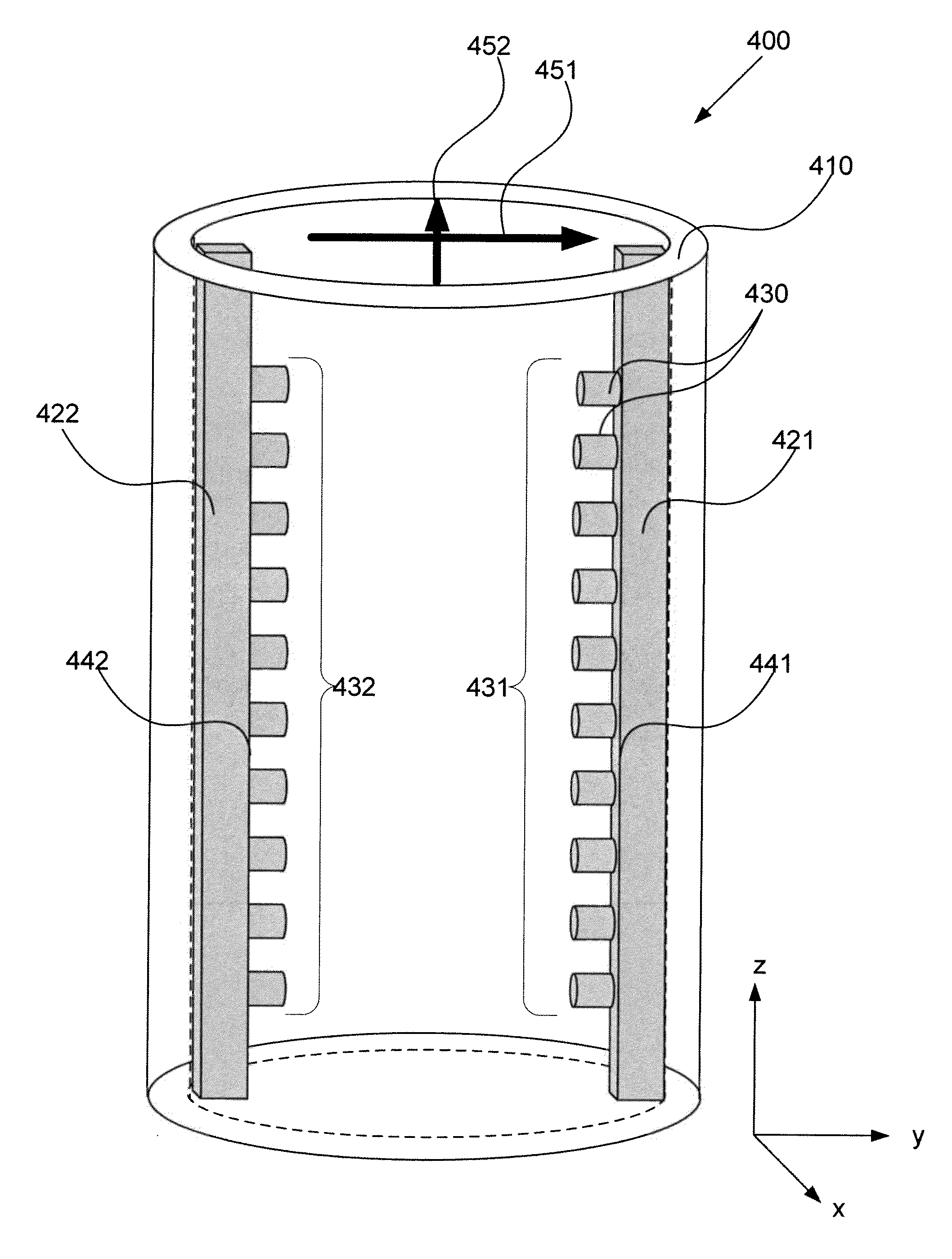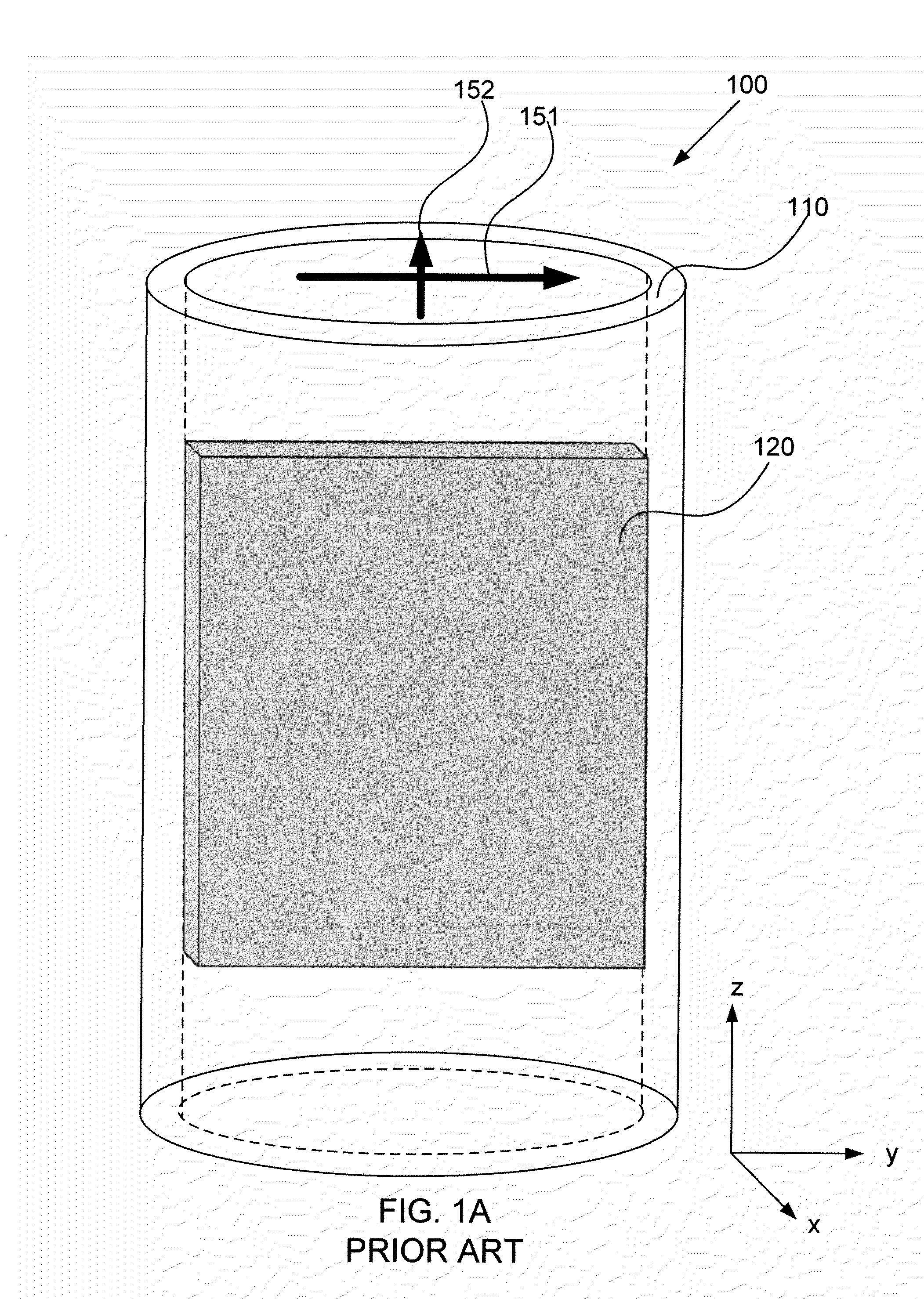High Power Waveguide Polarizer With Broad Bandwidth and Low Loss, and Methods of Making and Using Same
a waveguide polarizer, broad bandwidth technology, applied in waveguide devices, basic electric elements, electrical apparatus, etc., can solve the problems of elliptic wave, useful bandwidth less than 1%, and the monotonic increase of the differential phase shift induced by the slab b>120/b>, and achieve high-power waveguide polarizers, low loss, and broad bandwidth
- Summary
- Abstract
- Description
- Claims
- Application Information
AI Technical Summary
Benefits of technology
Problems solved by technology
Method used
Image
Examples
Embodiment Construction
Overview
[0044]Embodiments of the invention provide waveguide polarizers having significantly improved performance relative to the prior art polarizers described above. First, the inventive waveguide polarizers have a significantly broader bandwidth than previously achieved with slab, stepped ridge, or septum polarizers, for example. This broader bandwidth is achieved, in part, by providing, within a hollow cylindrical waveguide body, at least one ridge, for example, a pair of ridges, that include a plurality of spaced projections on their upper surfaces. As described in greater detail below, the projections may be cylindrical or rectangular posts, or serrations, for example, that protrude from a lower portion of the ridges. Like the ridges discussed above with respect to FIG. 2A, the inventive ridges induce a differential phase delay in orthogonal modes traveling through the waveguide body. However, the spaced projections modify the wavelength dependence of the phase delay induced b...
PUM
 Login to View More
Login to View More Abstract
Description
Claims
Application Information
 Login to View More
Login to View More - R&D
- Intellectual Property
- Life Sciences
- Materials
- Tech Scout
- Unparalleled Data Quality
- Higher Quality Content
- 60% Fewer Hallucinations
Browse by: Latest US Patents, China's latest patents, Technical Efficacy Thesaurus, Application Domain, Technology Topic, Popular Technical Reports.
© 2025 PatSnap. All rights reserved.Legal|Privacy policy|Modern Slavery Act Transparency Statement|Sitemap|About US| Contact US: help@patsnap.com



